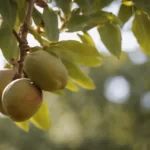Lemon balm, a perennial herb in the mint family, is renowned for its citrus-scented leaves and a multitude of uses ranging from culinary to medicinal. It is prized for its calming properties, aiding in relaxation and digestion. Drying lemon balm is an excellent way to preserve its aromatic flavor and therapeutic qualities, making it accessible for use throughout the year.
Harvesting Lemon Balm for Drying
The key to preserving the best qualities of lemon balm lies in proper harvesting. The ideal time to harvest is in the morning after the dew has evaporated but before the sun is at its peak. This is when the essential oils are most concentrated in the leaves, ensuring maximum flavor and potency. Cut the stems just above the leaf nodes, selecting healthy, vibrant leaves. Avoid any discolored or damaged leaves, as these can affect the overall quality of your dried herb.
Preparing Lemon Balm for Drying
Once harvested, prepare your lemon balm by gently washing the leaves to remove any dirt or insects. Pat them dry with a clean towel or use a salad spinner to remove excess moisture. Depending on your chosen drying method, you can either leave the leaves on the stems or remove them. If you’re short on space or using a dehydrator, removing the leaves might be more practical. However, for air drying, keeping the leaves on the stems and bundling them together can be an effective approach.
Choosing a Drying Method
When it comes to drying lemon balm, there are several methods to choose from, each with its own set of benefits. Air drying is the most traditional and requires no special equipment, making it accessible and easy. Oven drying is faster but requires careful monitoring to prevent burning. Using a dehydrator offers the most control over temperature and is efficient, especially for larger quantities.
Air Drying Lemon Balm
Air drying is a simple and natural method. To air dry lemon balm:
- Bundle and Hang: Tie small bundles of lemon balm stems together and hang them upside down in a warm, dry, and well-ventilated area away from direct sunlight. A dark room like an attic or a closet works well.
- Check Regularly: It usually takes about 1-2 weeks for lemon balm to dry completely. Check the leaves periodically; they should feel crisp and crumble easily when ready.
Oven Drying Lemon Balm
For a quicker drying method, you can use your oven:
- Preparation: Preheat your oven to the lowest setting (usually around 170°F or 75°C). Spread the lemon balm leaves in a single layer on a baking sheet lined with parchment paper.
- Drying Process: Place the baking sheet in the oven, leaving the door slightly ajar to allow moisture to escape. Check the leaves every 30 minutes. Typically, it takes between 1-2 hours for the leaves to dry completely.
Using a Dehydrator to Dry Lemon Balm
A dehydrator provides the most consistent and efficient method:
- Arrange Leaves: Spread the lemon balm leaves in a single layer on the dehydrator trays, ensuring they do not overlap.
- Dehydrating Settings: Set your dehydrator to a low setting, around 95°F to 105°F (35°C to 40°C). The drying process can take 4-12 hours, depending on the dehydrator and the moisture content of the leaves.
Each of these methods has its advantages, and the best choice depends on your individual needs and resources.
Storing Dried Lemon Balm
Proper storage is crucial for maintaining the flavor and medicinal properties of your dried lemon balm. Once the leaves are completely dry and brittle to the touch, it’s time to store them.
- Crumbling the Leaves: Gently crumble the dried leaves with your hands, discarding any stems or tough parts. Crumbling increases the surface area, releasing more flavor when used.
- Choosing the Right Container: Store the crumbled leaves in an airtight container. Glass jars with tight-fitting lids are ideal as they prevent moisture and air from entering, which can degrade the quality of the herbs.
- Ideal Storage Conditions: Place the container in a cool, dark place like a pantry or a cupboard. Exposure to light and heat can cause the lemon balm to lose its potency and flavor more quickly.
- Labeling: Don’t forget to label the container with the date of storage. Dried lemon balm can typically retain its quality for up to a year when stored properly.
Using Dried Lemon Balm
Dried lemon balm can be used in a variety of ways. It is popular in herbal teas, where it imparts a mild lemony flavor and calming properties. It can also be used in culinary dishes, added to salads, dressings, or used as a garnish. In terms of its medicinal uses, it’s known for aiding digestion, reducing anxiety, and promoting sleep.
Conclusion
Drying lemon balm is a simple and effective way to preserve this versatile herb. Whether you choose to air dry, oven dry, or use a dehydrator, each method ensures that you can enjoy the benefits of lemon balm year-round. Properly stored, dried lemon balm can be a delightful addition to your herbal tea blends, culinary creations, or as a natural remedy in your wellness routine. By following these steps, you can easily preserve the essence of lemon balm and enjoy its myriad of uses.




